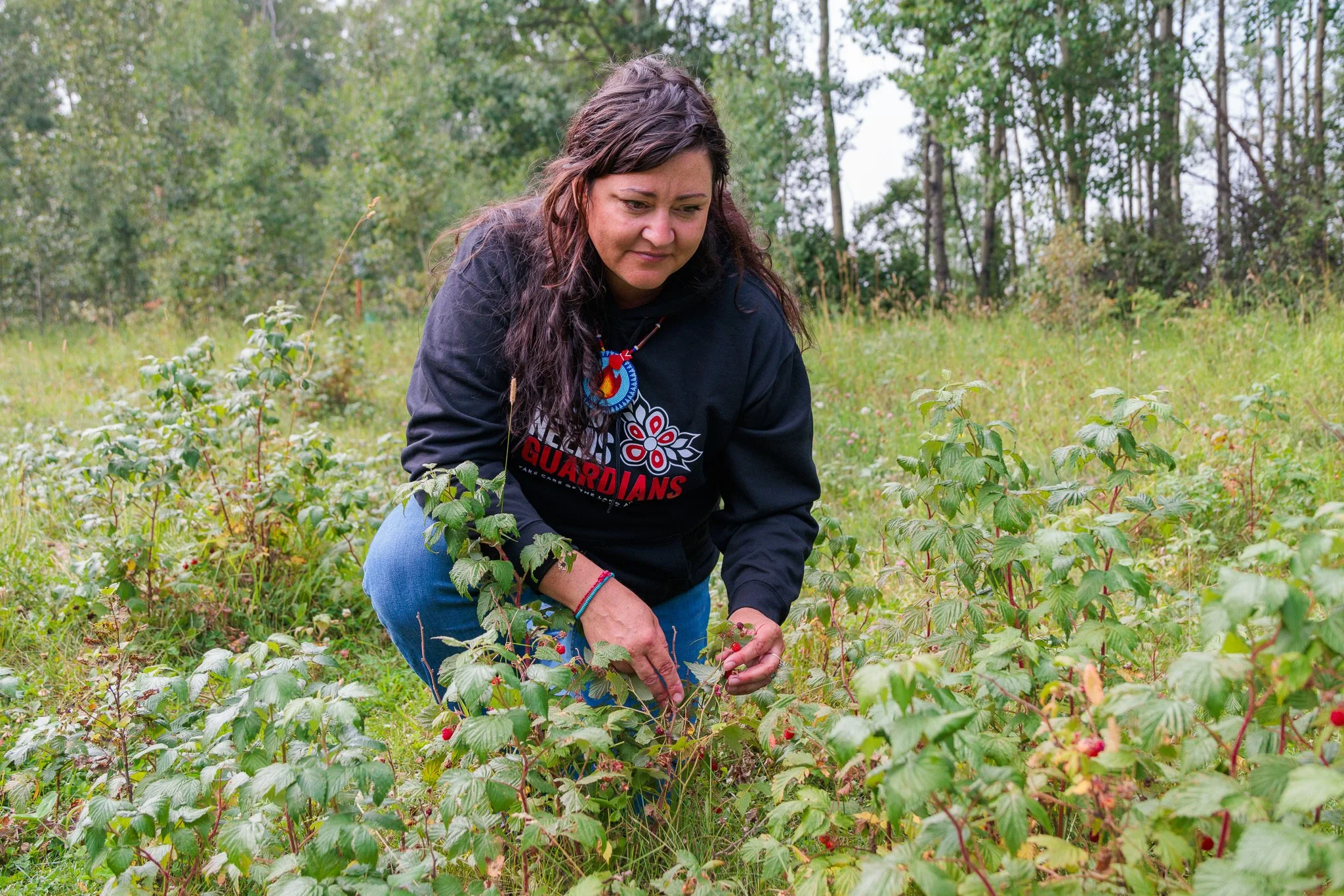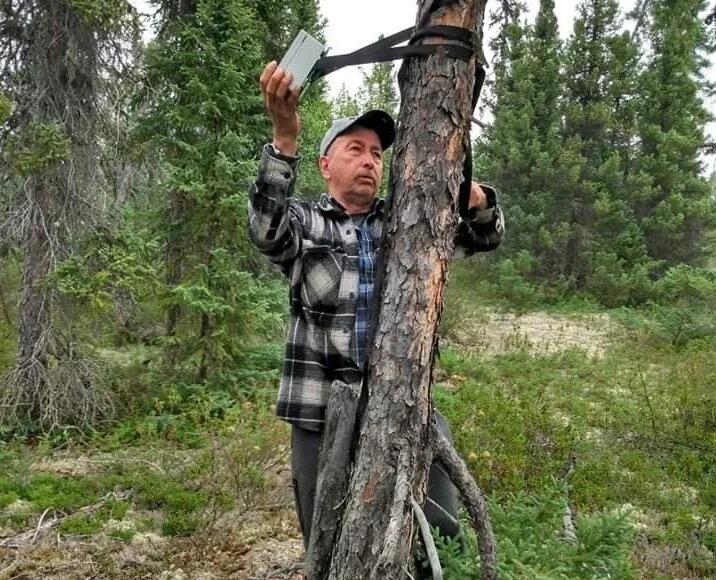The Boreal Forest in Canada is the largest intact forest left on the planet, sustaining an abundance of animal and plant life and offering a shield in the fight against climate change. Thanks to several Indigenous-led breakthroughs, vast areas of the boreal are on track to be sustained and conserved far into the future.
Read MoreAs climate change and biodiversity loss approach a critical point, the Seal River Watershed offers a gift: an opportunity to sustain healthy lands at a sweeping scale. When finalised, the Indigenous Protected Area will be the largest land-based protected area in Canada. It will also support a new model of conservation – one led by and for Indigenous Nations – and contribute to global efforts to sustain biodiversity. It will ensure that habitats and peoples thrive, and thousands of caribou, millions of migratory birds and more are abundant for generations to come.
Read MoreWith the arrival of autumn, between 3 billion to 5 billion birds are preparing to travel from their nesting grounds in the Boreal Forest in Canada to wintering grounds thousands of miles away. This fall is also when the UN Biodiversity Conference, or COP16, will be held in Cali, Colombia. Migrating birds remind us of the interconnectedness of nature, and they link Canada and Colombia–two seemingly disparate places–through their life cycles.
Read MoreSummer in the Boreal Forest means an abundance of berries—blueberries, strawberries, cloudberries, raspberries, bunchberries, and more. These berries help sustain bears, moose, and other animals. People within the over 600 Indigenous communities across the boreal are also nourished by them. Gathering and eating fresh berries has been a source of nutrients and enjoyment for millennia.
Read MoreEfforts to conserve the Boreal Forest in Canada saw several breakthroughs in 2023, from a visionary initiative that will sustain vast lands and communities in the Northwest Territories to a dramatic growth in the number of Indigenous Guardians programs stewarding lands and waters.
Read MoreOver time, the critical mass of dozens of land use plans and protected area initiatives emerging across the Boreal Forest has leveraged a national focus on Indigenous Protected Areas, managed by Indigenous Guardians. This effort has ripened into a new, 21st Century approach to conservation of biodiversity, an Indigenous-led conservation system that is rapidly advancing across Canada.
Read MoreILI is taking the helm of the International Boreal Conservation Campaign and absorbing IBCC’s remaining staff, assets, and relationships with funders. This milestone marks one of the first times a longstanding, successful environmental campaign has been transferred to Indigenous leadership.
Read MoreCOP15 is also our chance to do something big – to not only talk about protections, but take action and truly protect global biodiversity on the massive scale that is still possible because we have intact places like the Boreal Forest.
Read MoreThe Cree and Innu have been friends since time immemorial. This agreement is us taking responsibility for our shared relationship with the caribou. When we take care of each other’s hunger, it is a show of respect. When we share in a good way, the Caribou Master will provide.
Read MoreElder Dave Courchene’s wisdom and insight into our relationships with each other, our planet, and our creator was simply unparalleled. He freely shared his profound knowledge and observations with anyone who sought greater understanding.
Read MoreSome of the world’s largest land-based stores of carbon are found in the Boreal Forest of North America. Many projects are underway that will increase land protections in the Boreal Forest—conserving both the carbon stores as well as the rich ecological values.
Read MoreIndigenous Peoples have been in relationship with the plants and animals of the Boreal Forest in Canada for thousands of years – since before time was recorded, as is often said. These relationships are at the center of Indigenous stewardship and the reason the boreal remains the largest intact forest left on the planet.
Read More“This is the largest federal investment in Indigenous-led stewardship to date, and we welcome the Government of Canada’s commitment to partnering with Indigenous Nations on conservation and stewardship,” said Valérie Courtois, the Director of the Indigenous Leadership Initiative.
Read MoreAudubon and the Seal River Watershed Alliance, an Indigenous non-profit coalition, have worked together to record the sounds of a critical bird breeding area.
Read MoreBudget 2021 will help ensure the Boreal Forest continues to protect biodiversity and the climate for generations to come. It makes new investments in nature conservation and singles out the role of Indigenous Protected and Conserved Areas and Guardians programs in achieving international targets.
Read MoreDr. David Schindler was a giant among the academic scientific community. He was a fearless communicator of truth to power, speaking honestly and passionately about what science was telling us about the state of the environment and what needed to be done to ensure a healthier and more equitable world.
Read MoreBoldly yet delicately colored in swaths of yellow, salmon, frost white, or raspberry, the beauty of winter finches is a welcomed sight to what is often a pallid landscape across the northern tier of the United States. We are transfixed by their annual movements, particularly their incredible irruptions outside of their expected ranges, in search of food. There is no question about it, winter finches are both beautiful and wild. It is their very essence.
Read MoreAcross much of the U.S. and Canada birders are participating in getting a late winter snapshot of the status of birds. Started more than twenty years ago by Audubon and the Cornell Lab of Ornithology and joined by Birds Canada in 2009, the Great Backyard Bird Count invites bird enthusiasts of all kinds to count birds anywhere from February 12-15.
Read MoreAmid the challenges presented by COVID-19, several bright spots emerged. Across the Boreal Forest, Indigenous Nations and their allies made sweeping gains in sustaining the lands, waters and natural systems we all depend on.
Read MoreConserving intact forests not only pulls carbon from the air, it also sustains habitat for birds and other wildlife we love. Many Indigenous Nations are leading the way with nature-based climate solutions by conserving large healthy lands rich in bird nesting grounds.
Read More



















